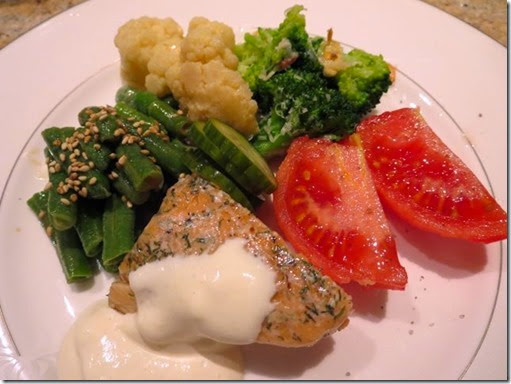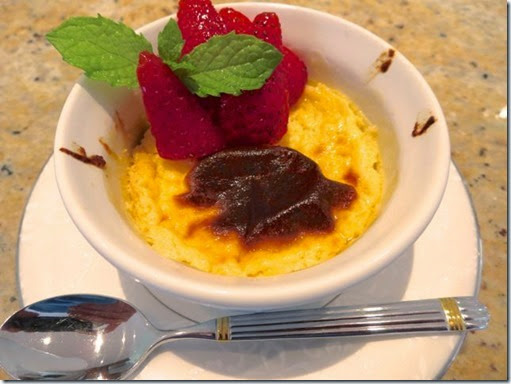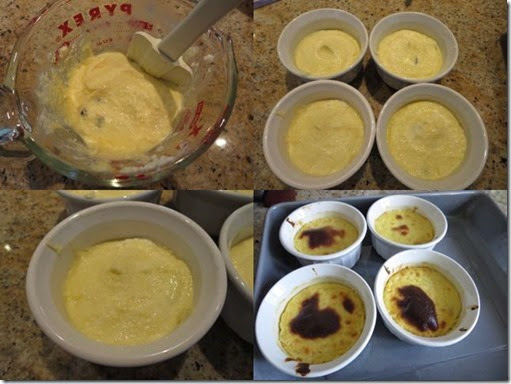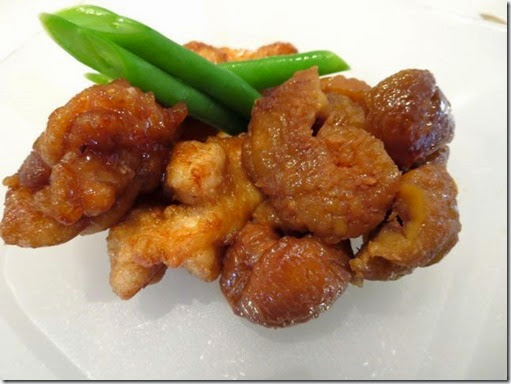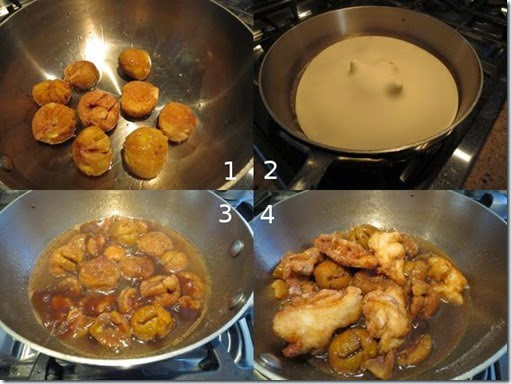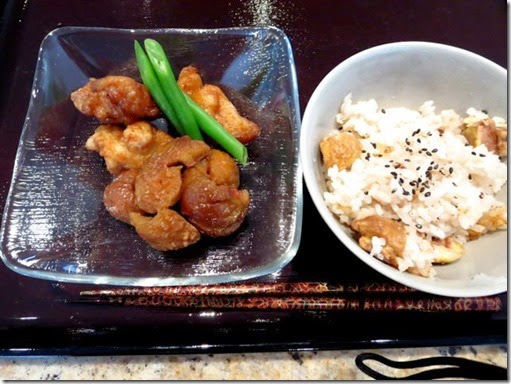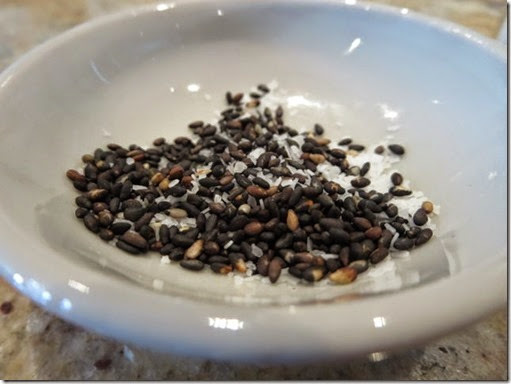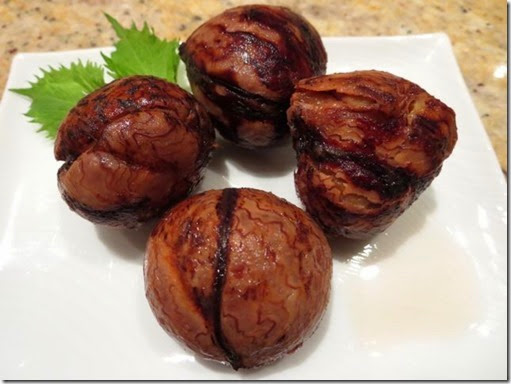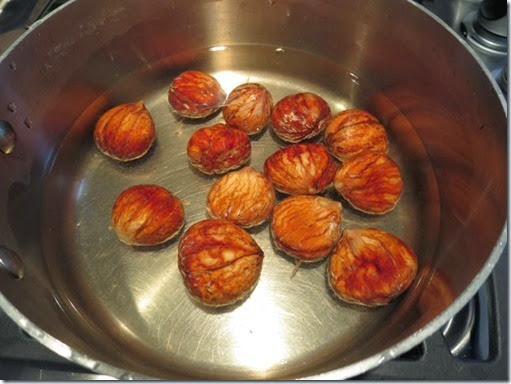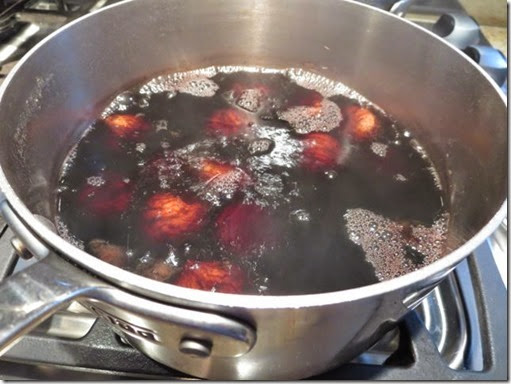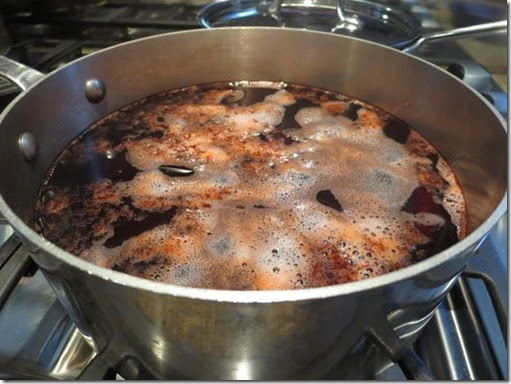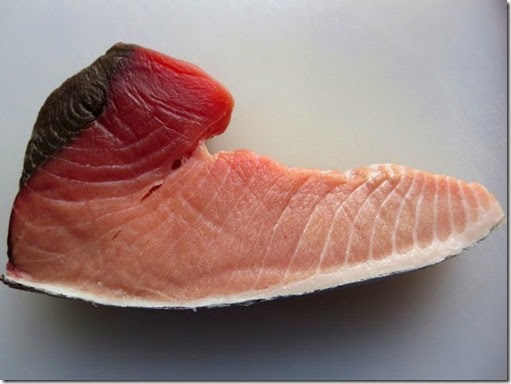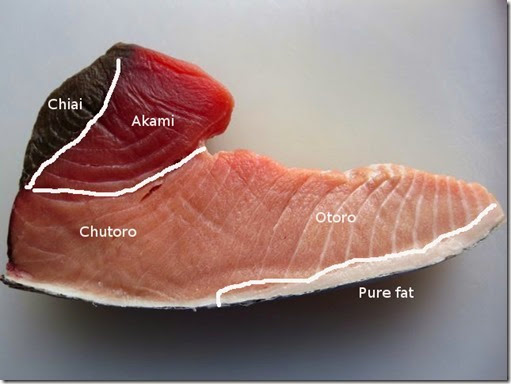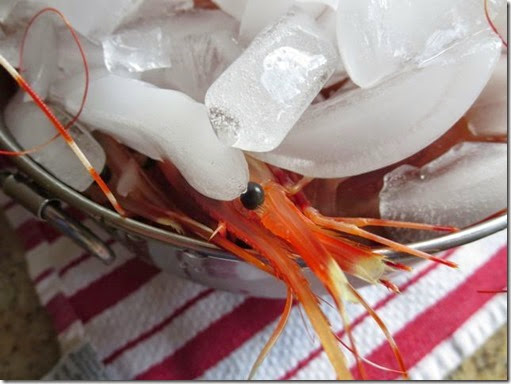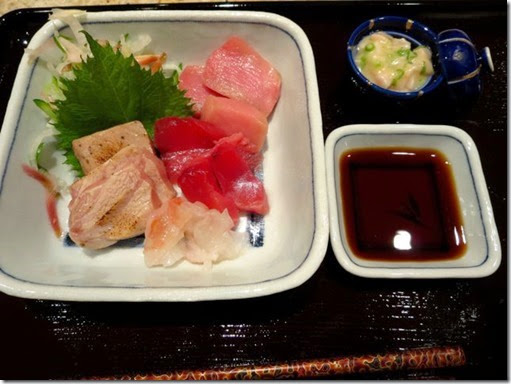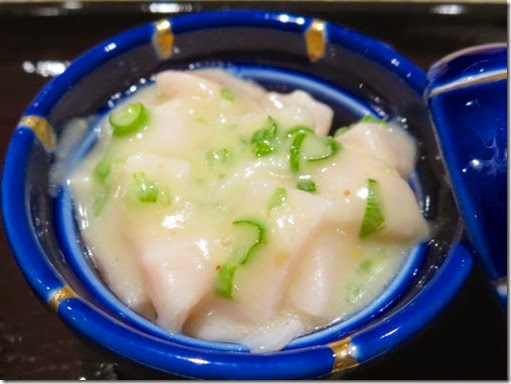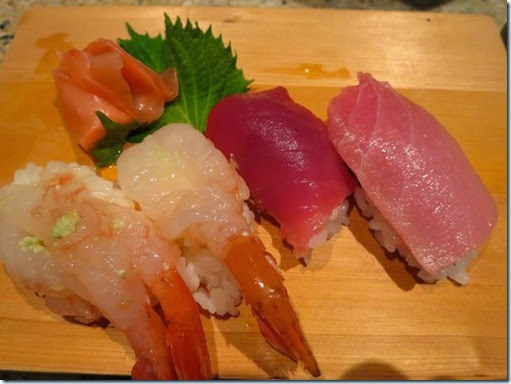This time, all the goodies I ordered came at the same time which included matsutake 松茸, Northern American Chestnuts 北米産栗 and
tuna 本マグロ, amaebi 甘エビ and uni うに. from
Catalina. I have posted matsutake and chestnut dishes many times before but we can only have these items once a year so I still take delight in their arrival. In addition, on the same day, we received sashimi items from Catalina (the sashimi was scheduled to arrive that day but it just so happened that the other items while not scheduled for delivery arrived the same day). This fortuitous coincidence called for an "akino mikaku" 秋の味覚 or tastes of autumn feast.
I used the
fresh matustake from Oregon, by cooking them steamed with sake in
a touban grill . We like this way of cooking matustake best (after trying many other dishes). The wafting smell of the matsutake when I remove the dome-shaped lid is the best and one of the pure enjoyments of the experience. I simply served with kosher salt and a wedge of lemon.

I also served a small sashimi of
amaebi and
uni. The amaebi was very fresh and sweet (some were still alive when they arrived). The uni was "premium uni" and, to be truthful, not that great. Since I had boiled chestnuts, I also served one.
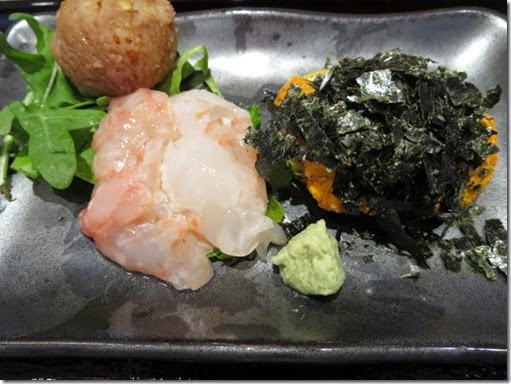
We also had chestnut rice as shime dish with a
miso soup with heads of anaebi.
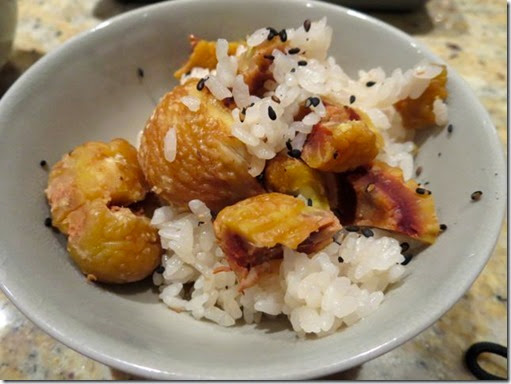
Here are the matsutake from Oregon mushroom. As you can see they were quite dirty. This time many stalks were left with knife gashes indicating they were not carefully harvested.
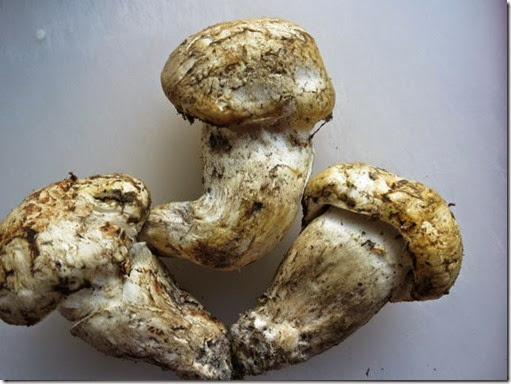
Most of instructions for cleaning matsutake indicate that after shaving off the stem ends with embedded dirt as you would if sharpening a pencil, gently rub off the dirt using a wet dish towel. I didn’t think this would work well. Nothing is worse than biting into sand and dirt when eating matsutake. So after cleaning as above, I use a sharp paring knife and cut off or scraped off the thin surface layers to make sure no sand or dirt remained (see below).
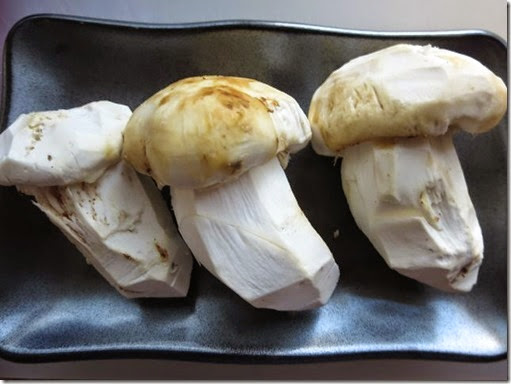
These are the “colossal” chestnuts we received.
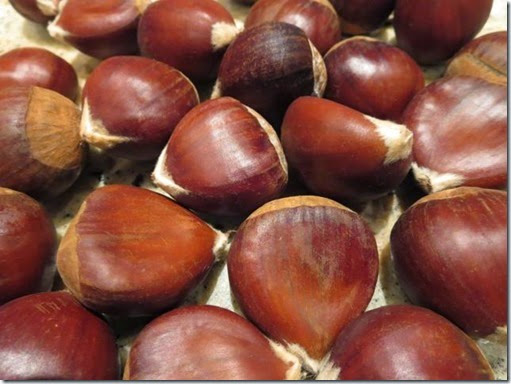
I used the chestnuts to make chestnut rice. In previous years I used a mixture of “glutenous” “mochi gome” rice 餅米 and regular short grain rice, this year, I used all imported Koshihikari コシヒカリ rice from Niigata. I cooked it using “
Kamadosan” earthenかまどさん pot rice cooker (see below).
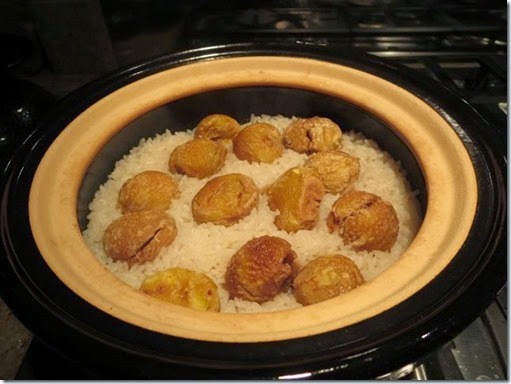
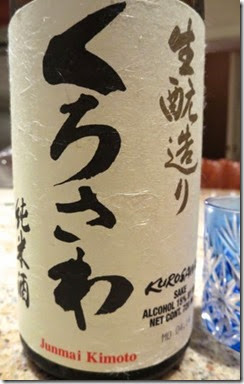
For libation, we had junmaishu 純米酒 called “Kurosawa” くろさわ from Kurosawas shuzou
黒澤酒造 in Nagano 長野. This was made by an old process called “Kimoto” 生酛 in which naturally occurring lactic fermentation is used instead of inoculation with lactobacillus. Although, Ginjou and Daiginjou sake are elegant and clean and crisp, sometimes we like to taste a more down-to-earth sake flavor and “Junmai” class is the best bet for this. This one is not overly yeasty (which often happens in this class of sake) and had a slight sweet note with distinctive honey suckle after taste. We really liked it although a bit more acidity may have been better. In any case, sipping Kurosawa with all these autumn tastes, we feel we did justice to the celebration of the arrival of autumn.






